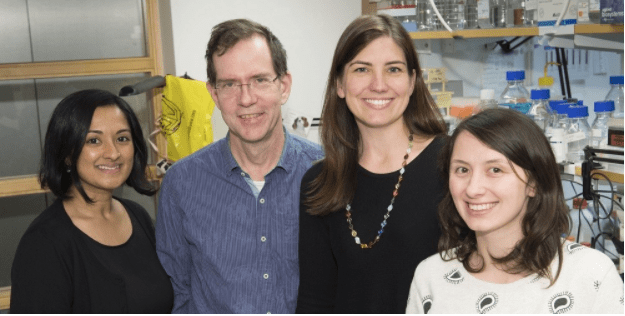CHILDREN WITH ALAGILLE SYNDROME HAVE MALFORMED BILE DUCTS
Serious liver and heart problems can affect children with Alagille Syndrome early in life. While there is as yet no cure, researchers at Karolinska Institutet have discovered that the liver disease part of the syndrome is caused by specific malformations of the bile ducts. The results, which are published in the journal Gastroenterology, were discovered with the aid of a new mouse model that can now be used to develop and test new therapies.
Every year, a handful of children are born in Sweden with the rare genetic disease known as Alagille Syndrome. Some of them become very ill with chronic liver and heart problems, sometimes so serious that they require a transplant. The liver problems can also give rise to severe itching. Other possible symptoms of the disease, which is usually caused by different mutations of the
JAGGED1 gene, are deformities of the eyes or bones, and sometimes growth disorders. The children can also develop problems with other organs, such as the kidneys. Little is currently understood about how the disease can develop and each symptom is treated separately.
Point mutation interferes with signaling system
Using mice with a mutation in
JAGGED1 and similar liver and heart problems, the researchers have discovered that the mutation not only affects the development of certain cell types, but also controls the actual formation of the liver’s bile ducts.
By substituting a specific amino acid in a so-called “Notch ligand” encoded by
JAGGED1, they found that this single point mutation can interfere with the important Notch signaling system and disrupt communication between the Notch ligand and the Notch receptors. The interaction with the Notch 1 receptor failed, while communication with the Notch 2 receptor was possible.
“The discovery is important and opens up possibilities for new, more specific treatments,” says
Emma Andersson, assistant professor at Karolinska Institutet’s
Department of Biosciences and Nutrition. “We hope to be able to use our mouse model to understand the disease better, predict which children will need a transplant and ultimately find a cure.”
Liver samples from patients
The researchers also obtained liver biopsies from patients, which they studied using RNA sequencing.
“The liver samples were the most important piece of the puzzle for our study,” says Dr Andersson. “Thanks to them, we were able to verify that the results from our mouse model and cell experiments were actually relevant to humans and patients. I’m extremely grateful for these donations. By comparing RNA sequencing with the Human Protein Atlas, we’ve also been able to identify new markers for the bile ducts that confirm the malformations that develop in patients with Alagille Syndrome.”
The study was financed from several sources, including the Daniel Alagille Award (EASL), the Swedish Research Council, the European Research Council, the Swedish Cancer Society, the Swedish Brain Fund, the Knut and Alice Wallenberg Foundation and the ICMC.
Publications
“Mouse Model of Alagille Syndrome and Mechanisms of Jagged1 Missense Mutations”
Emma Rachel Andersson. Indira V Chivukula, Simona Hankeova, Marika Sjöqvist, Yat Long Tsoi, Daniel Ramsköld, Jan Masek, Aiman Elmansuri, Anita Hoogendoorn, Elenae Vazquez, Helena Storvall, Julie Netušilová, Meritxell Huch, Björn Fischler, Ewa Ellis, Adriana Contreras, Antal Nemeth, Kenneth C. Chien, Hans Clevers, Rickard Sandberg, Vitezslav Bryja, Urban Lendahl
Gastroenterology, online 20 November 2017, doi: 10.1053/j.gastro.2017.11.002
Copied from the Karolinska Institutet website.
Follow this link to see the original article.



